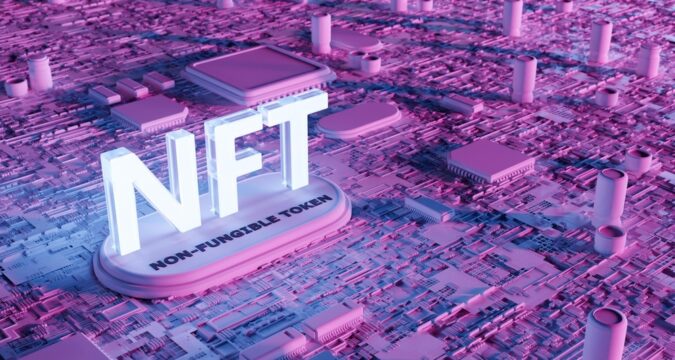
What is an NFT?
NFT is a type of digital token that stands for non-fungible token. NFTs are unique in nature meaning that one NFT cannot be exchanged with another like crypto coins issued from a blockchain. NFTs are used to define digital ownership for the holder.
NFTs are based on proof-of-authenticity that ensures that the given NFT does not have an exact replica or cloned.
NFTs are also created on a blockchain such as Ethereum. They are traded on NFT marketplaces on centralized and decentralized trading channels. NFTs have gained popularity among specific industries such as collectors and creators. Another industry that has incorporated NFTs is GameFi or Web 3.0 gaming sector and virtual real estate.
Types of NFTs
NFTs can be categorized into different types based on their structure, contents, and other factors. Some of the important facets that are used to classify NFTs are mentioned as under:
Sorting by Utility
NFTs are classified based on their use cases or the industry that they are traded within. In this manner, NFTs can be traded among artists or art collectors who are working with digital artwork. In some cases, musicians, gamers, virtual real estate dealers, and other professionals trade NFTs within the sector.
Token Standard
NFTs are also distinguished based on the token standards that they have incorporated. Some NFTs are compliant with ERC-721 while some can incorporate ERC-1155 etc.
Blockchain Issuer
NFTs are distributed in different types based on the blockchain that has issued the given unit. An NFT is a different type if it is issued or hosted on a given blockchain in comparison to other networks.
User Interaction
NFTs can have a different type of interactive format based on their intrinsic design. Some NFTs are static or read-only format. On the other hand, NFTs can also be present in the form of media firled that allow users to interact with it or exist in a dynamic form.
NFTs are also branched into various kinds based on their uniqueness, creator, and interoperability. However, the most important method used to define NFTs is the utility of the product.
NFT Categories Based on Utility
NFTs bring various use cases for their buyers. Here are some of the most common use cases of associated with NFTs mentioned as under:
Profile Pictures
In an era of social media sites, most people hold multiple social media accounts at a given time. Therefore, profile pictures have become one of most used digital entity.
NFTs have gained popularity as profile picture with the introduction of CryptoPunks. This NFT collection was created by LarvaLabs in 2017. Some social media sites have incorporated NFT profile picture display options for the account holders.
Digital Artwork
Digital artwork is one of the most popular categories for NFTs. This sector includes NFTs based on famous paintings, illustrations, animations, and other artistic expressions in the form of digital artwork.
Artists can also tokenize their products and allow buyers to purchase the digital ownership of their products bringing monetization to artists.
Music
NFTs have also gained popularity among Musicians who have tokenized albums, music, or indie works rather than publishing them through record labels. In this manner, Musicians are able to interact with artists directly with their fans and earn royalties from the secondary sales of their production.
In-Game Assets
GameFi and Web 3.0 sectors are working on bringing more interactive games for the users. NFTs are also used in this sector as a way for players to establish digital ownership for in-game items.
Gaming products such as Decentraland allow players to trade various in-game items such as skins, weapons, themes, and other stuff in the form of NFTs.
Virtual Real Estate
One of the most talked about utility of NFTs is virtual real estate. Metaverse and other Web 3.0 realms have incorporated sales and purchase of virtual real estate using NFTs.
Utility
Utility NFTs are used to purchase or sell products and services in real life. For example, anyone can purchase tickets to a game, or unlock discount by purchasing a given NFT collection. Utility NFTs are used for trading of tickets, membership, and special access etc.
At the same time, utility NFTs allow the issuers to monetize different aspects of their product or services that were otherwise not possible.
Digital Identification
NFTs are used for the creation and representation of digital identification. The users may be able to mint a unique digital ID based on user privacy and bring greater autonomy for an individual by granting them greater control over personal data.
Conclusion
NFTs are used in many sectors ranging from literature, sports, health care, fashion, real estate, gaming, and film industry etc. With the passage of time, new use cases are introduced with NFTs with an increasing amount of users added to the sector.




